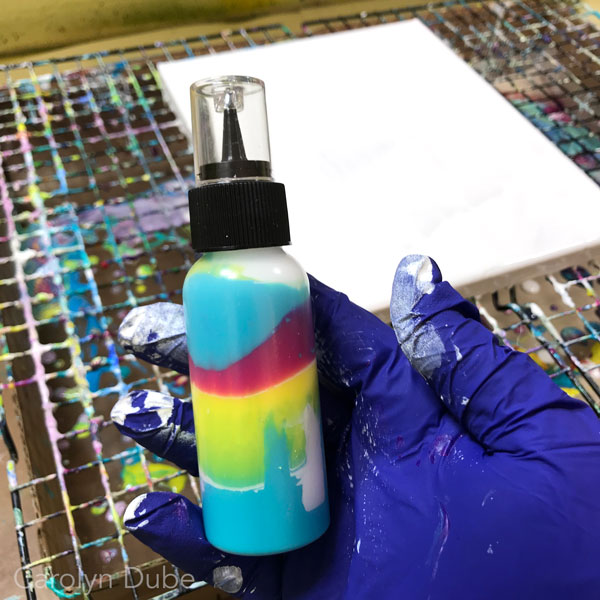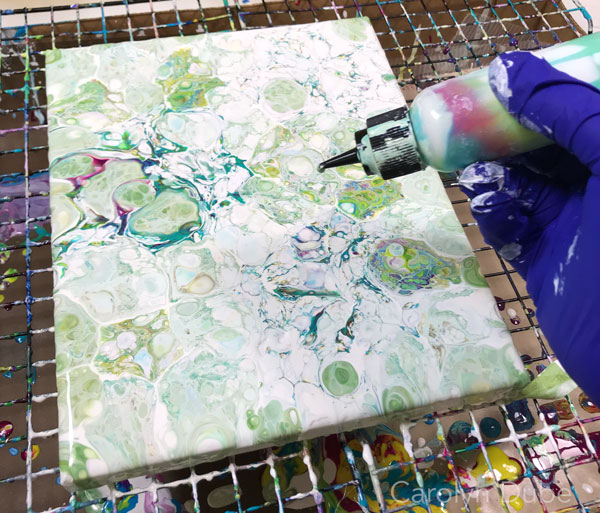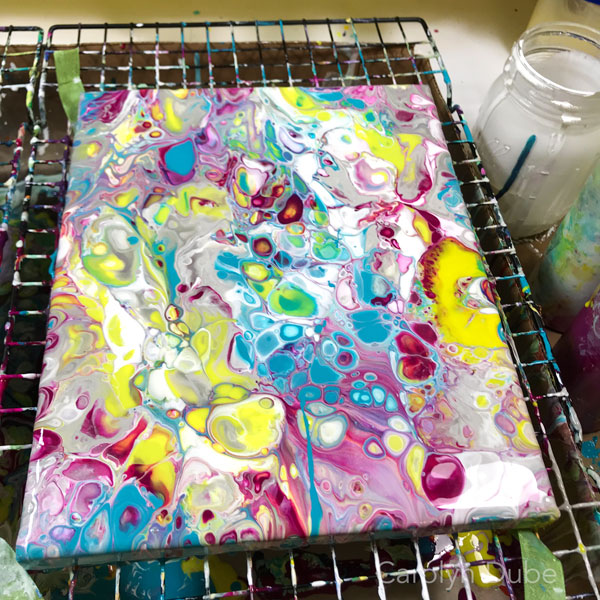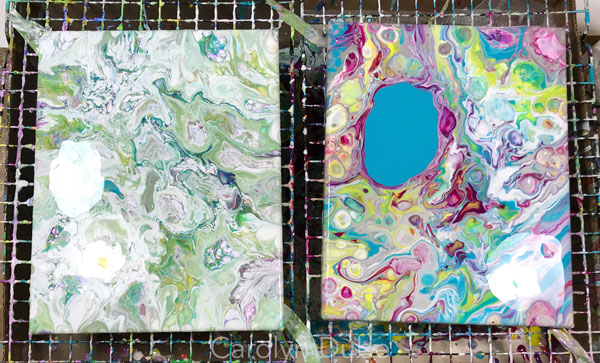Having a base layer of paint helps it flow, but it helps it flow. Meaning, that there is a current and movement, so do it once with out that.
Same Colors, Same amount of silicone in the paints, but very different looks.
Each squeeze mixes it a bit, so that it becomes a softer, then muddier color. Both were done side by side with same colors, but they mixed on one. No reason to waste a thing, so dumped the muddy backwash as the base layer and mixed it to make it a grey/brown. Then brought in more colors and finally added a big pond of teal for interest.
Notice the variations, how the same 3 colors, can be so different based on how you add them to the bottle. In the Floetrol video, I made the layers of color much thicker and with less white so I had more vibrant colors. The first one, had more white and thinner layers of color so more mixing, more finely detailed cells. Which is better? That depends on what look you like the most. It’s also why it is impossible to duplicate a pour.
On the Floetrol/dimethicone canvas, there was no background of paint concoction, so it didn’t more as much. Floetrol moves less than the other pouring mediums also. Used the dimethicone to create cell action since I was not going to swipe.
Paint Big circles in the multi color one?

We’re making manual cells. By having the white on the canvas, then adding drops of siliconed color from the bottle, it makes big cells with little cells in it. But there’s a lot of paint on here, so it is going to flow.


